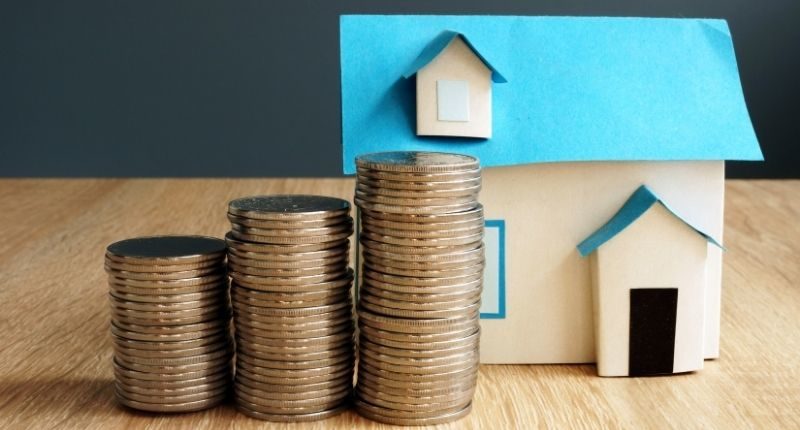- November marked the 14th consecutive month of house values rising
- National housing values have risen 22.2% over the past 12 months
- However, November’s result was the softest outcome since January
November marked the fourteenth consecutive month of house values continuing to rise around Australia, according to CoreLogic’s national home value index.
The update takes national housing values 22.2% higher over the past 12 months, adding around $126,700 to the median value of an Australian home.
However, according to CoreLogic, November’s result was the softest outcome since January when values rose 0.9%. Since a cyclical peak in the rate of growth in March, when housing values rose at 2.8%, there has been a notable trend towards milder price growth.
CoreLogic research director Tim Lawless said the slowdown in the pace of growth is due to a number of reasons.
“Virtually every factor that has driven housing values higher has lost some potency over recent months. Fixed mortgage rates are rising, higher listings are taking some urgency away from buyers, affordability has become a more substantial barrier to entry, and credit is less available.”
CoreLogic research director Tim Lawless
This comes after the Australian Bureau of Statistics (ABS) recorded a decrease in economic activity in the September quarter, with the Australian Gross Domestic Product falling 1.9%.
ABS acting head of national accounts Sean Crick said, “Domestic demand drove the fall, with prolonged lockdowns across NSW, Victoria, and the ACT resulting in a substantial decline in household spending.”
Change in dwelling values
| Month | Quarter | Annual | Total return | Median value | |
| Sydney | 0.9% | 4.3% | 25.8% | 28.8% | $1,090,276 |
| Melbourne | 0.6% | 2.4% | 16.3% | 19.0% | $788,484 |
| Brisbane | 2.9% | 7.4% | 25.1% | 29.8% | $662,199 |
| Adelaide | 2.5% | 6.5% | 21.4% | 26.5% | $558,179 |
| Perth | 0.2% | 0.4% | 14.5% | 19.5% | $528,540 |
| Hobart | 1.1% | 5.5% | 27.7% | 33.0% | $676,595 |
| Darwin | -0.4% | 0.2% | 16.7% | 23.5% | $493,047 |
| Canberra | 1.1% | 5.0% | 24.5% | 29.1% | $882,519 |
| Combined capitals | 1.1% | 4.0% | 21.3% | 24.6% | $783,557 |
| Combined regional | 2.2% | 5.9% | 25.2% | 30.4% | $527,322 |
| National | 1.3% | 4.4% | 22.2% | 25.8% | $698,170 |
Index results as at November 30, 2021. Source: CoreLogic
Brisbane and Adelaide are the only capital cities yet to experience a slowdown, with the monthly rate of growth reaching a new cyclical high across both cities in November.
Mr Lawless said, “Relative to the larger cities, housing affordability is less pressing, there have been fewer disruptions from COVID lockdowns and a positive rate of interstate migration is fueling housing demand.
“On the other hand, Sydney and Melbourne have seen demand more heavily impacted from affordability pressures and negative migration from both an interstate and overseas perspective.”

Supply
According to CoreLogic, different supply dynamics are also creating divergent trends across Australian capital cities.
In the four week period to November 28, total stock available for sale across Adelaide was -32% lower than the five year average, and -33.9% lower across Brisbane.
Across Sydney and Melbourne stock levels have become far more normalised in recent weeks, with Sydney’s total listings sitting just -2.6% below the five year average, while stock levels across Melbourne are 7.9% above the five year average.
NAB home ownership executive Andy Kerr said, “We are seeing the early signs of house prices easing as supply comes back on to the market.”
Value
Houses have continued to outperform units, with capital city values up 1.2% and 0.47% respectively over the month.
However, the quarterly rate of growth is now the narrowest it has been since October last year, with 1.6 percentage points between the two broad housing types.
Capital city houses are now 37.9% more expensive ($240,500) than capital city units, the largest difference on record.
Mr Kerr said, “The lure of being close to the CBD and all the lifestyle that offers and the value in an apartment, we are seeing the balance is starting to tip back.”
Mr Lawless said, “With such a large value gap between the broad housing types, it’s no wonder we are seeing demand gradually transition towards higher density housing options simply because they are substantially more affordable than buying a house.”
Regional
The slowdown in housing market conditions is less obvious across the regional areas of Australia, where the monthly pace of capital gains has accelerated over the past three months.
Across the combined ‘rest-of-state’ regions of Australia, housing values were up 2.2% in November, double the monthly rate recorded across the combined capital cities.
Regional Tasmania (2.5% month/29.8% year) and regional NSW (2.4% month/29.1% year) have been the standouts from a capital growth perspective, according to CoreLogic.
Across regional Australia, the strongest growth trends remain skewed towards the coastal lifestyle markets with NSW’s Southern Highlands and Shoalhaven recording the highest quarterly growth rate (9.7%) followed by the Hunter Valley (excluding Newcastle) (8.9%) and Tasmania’s Launceston and North East region (7.7%).
According to CoreLogic, demand for housing across regional markets, especially those within commuting distance of the major cities, is continuing to benefit from the rise in popularity of remote working arrangements, along with renewed demand for coastal and lifestyle properties, and in many cases, more affordable housing options.









